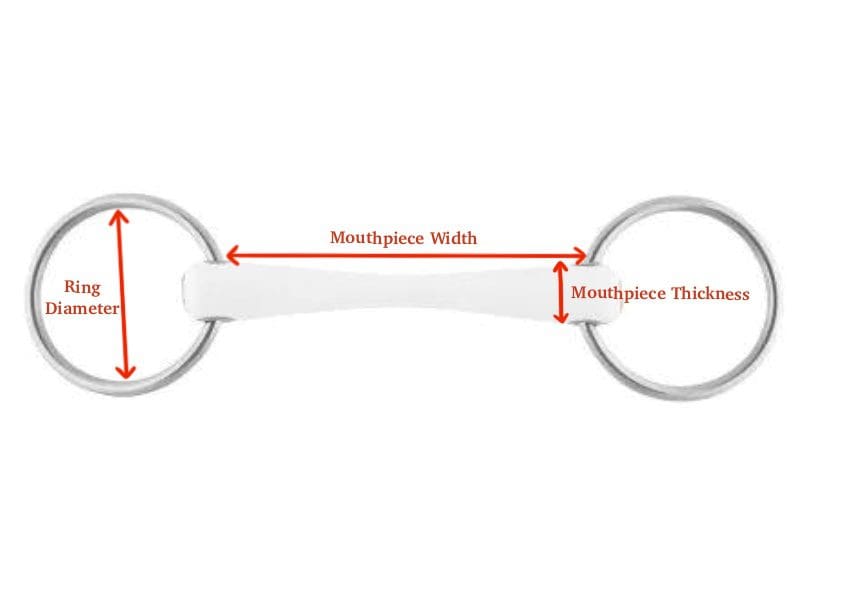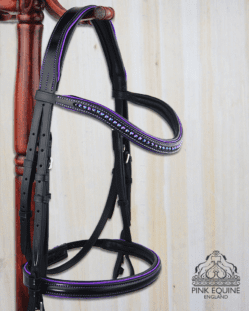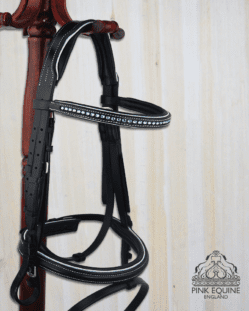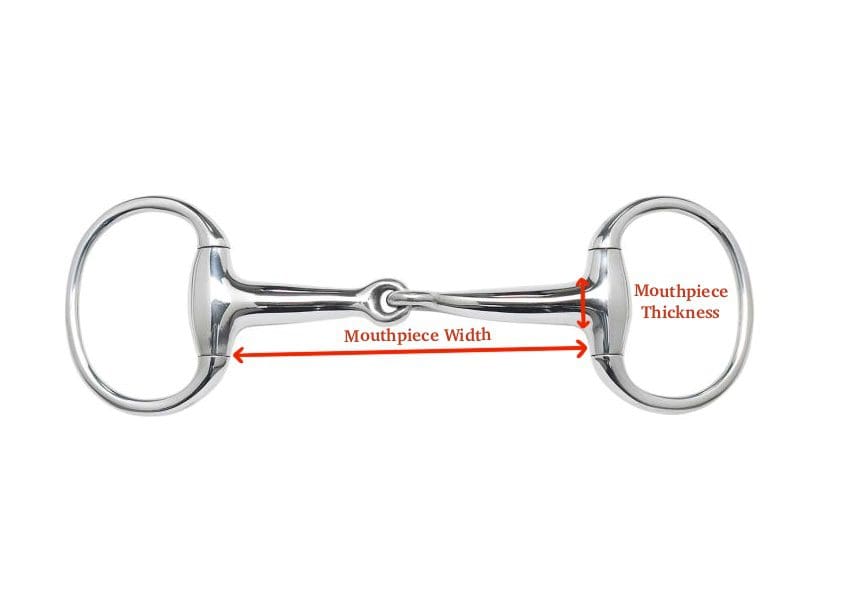**  USA Customers: Enjoy up to $800 Tax Free Imports - Even with Tariffs, we're still better value than US stores! **
USA Customers: Enjoy up to $800 Tax Free Imports - Even with Tariffs, we're still better value than US stores! **

As manufacturers of custom horse bridles, we understand the importance of selecting the right horse bits to complement our products. Investing in a quality bridle is futile if it’s compromised by an ill-fitting bit.
Our guide on how to measure a horse bit assumes you already know your horse’s mouth size and helps you translate those measurements to choose the correct bit size. While we recommend consulting a specialist bit fitter, we also provide instructions for those who prefer a DIY approach.


There are two important measurements taken from your horse’s mouth that are used when selecting a horse bit. They are the width side to side of your horse’s mouth and the size of the gap where the bit sits. For more information on how to take these measurements, read our article on “How to ensure a properly fitting bit”.
Whilst there are many variations of bit, there are broadly three groups of bits that you need to know about in terms of measurements, Loose ring Cheeks, Fixed Cheeks, and Weymouth.
In addition to the ring being able to pivot forward and backward in the mouthpiece, as the name suggests, the rings on this bit can also slide through the mouthpiece providing ease of movement and motivating the horse to relax the jaw. The rings should be able to move freely, but there should be no more than a 5mm gap between the mouth and the bit rings. If the rings fit too closely, they can pinch the sides of the mouth and some horses may need a bit guard, a circular rubber disc shape that fits between the mouthpiece and the rings.
To measure a loose Ring Cheek Bit, start by locating a ruler (wooden or plastic is best). Make sure you lay your bit on a flat hard surface, on top of a ruler, stretching the rings apart so that the bit is straight. Measure the length of the bit by determining the distance between the inside edges of the bit rings.
In the case of a loose ring cheek bit, measure from the inside of the hole designed for the ring attachment. Keep in mind that UK bits are typically measured in mm for precision. The width measurement of your horse’s mouth should correspond to the length measurement from the inside edge of the ring along the mouthpiece to the inside edge of the ring on the other side of the mouthpiece. (shown in the diagram below).
The size of the gap in your horse’s mouth should match the thickness or diameter of the mouthpiece (normally measured in mm). This measurement should be taken at the widest part of the mouthpiece, which is normally at the end just inside where the ring and the mouthpiece meet. You can take this measurement using a soft tape measure, but it is more accurate to use a bit measurer that normally includes a thickness gauge, or alternatively a set of callipers.
The diameter of the loose ring can be measured from top to bottom.

Bits that have fixed cheeks, such as the D-Ring or Eggbutt bit are fixed allowing the cheek ring to swivel forward and backward, but no upward or downward movement. Fixed cheek bits should sit as close as possible to the edge of each side of the mouth. For this reason, a fixed cheek bit should be one size smaller than a loose ring bit.
To measure a Fixed Cheek Bit, start by Laying the bit on a flat surface on top of a ruler stretching the rings apart so that the bit is straight. The mouthpiece width is measured from just inside both sides of the cheekpiece.
The thickness measurement of the bit is taken from the end of the mouthpiece just inside the cheekpiece as shown in the image below.

The Weymouth bit is used as part of a double bridle and in tandem with a second bit called a bradoon. (don’t make the mistake of using a snaffle bit with a Weymouth bit as the thickness and size of the rings are normally too large, compared to a bradoon bit). Double bridles are used by experienced riders and for those competing in advanced dressage.
In addition to the width and the thickness of the mouthpiece, a third measurement is required, the length of the lower shank. This is measured from the bottom end of the mouthpiece to the bottom of the shank. Weymouths are normally available in either 50mm or 70mm lower shank lengths.
The mouthpiece width measurement is taken in the same way as a fixed cheek bit and the thickness is measured at the thickest point where the mouthpiece fits into the shank.

Bits are sold in standard sizes and generally, bit measurements are illustrated in mm (millimetres), so if you have taken measurements in inches, you will need to convert them. Mouthpiece lengths vary from 95mm to 170mm, in 5mm increments. Recent research has shown that a horse’s oral cavity is actually smaller than originally thought. Most top brands offer thickness sizes between 12mm and 22mm with 14mm, 16mm, and 18mm being the most common sizes. Rings are available in sizes 55mm, 65mm, and 70mm.
When searching for a suitable bit for your horse, in addition to the width and thickness of the bit, you must decide whether you want a fixed ring, or a loose ring bit, whether you want the mouthpiece in a straight bar called a “Mullen Mouth”, or to be single-jointed, double-jointed, or even multi-jointed. Finally, there is a choice of materials that the mouthpiece is made from, such as rubber, plastic, copper, stainless steel, Aurigan, or Nickel plated.
The many different combinations of bit can seem overwhelming, however, most bit manufacturers also group bits by discipline, whether you are jumping, performing dressage, Eventing, or even just leisure riding and many also make specialist bits to help address specific concerns that a horse may be facing, such as excessive bit chewing, not taking the bit contact, putting the tongue over the bit, a sensitive mouth, or other behavioural issues.
Depending on your horse, you may need to try several different styles or shapes of horse bit until you find one that suits both you and your horse.
At Pink Equine, we’ve been making and designing premium horse bridles and tack since 2007, with a commitment to customisation and quality. Our custom-made bridles allow riders to mix and match parts for a perfect fit, ensuring every horse receives personalised attention.
Feel free to explore our ranges of top-quality horse tack to elevate your riding experience and join our free Pink Equine club where membership entitles you to enjoy valuable help, tips and knowledge, access to free competitions, new ranges and exclusive member discounts.